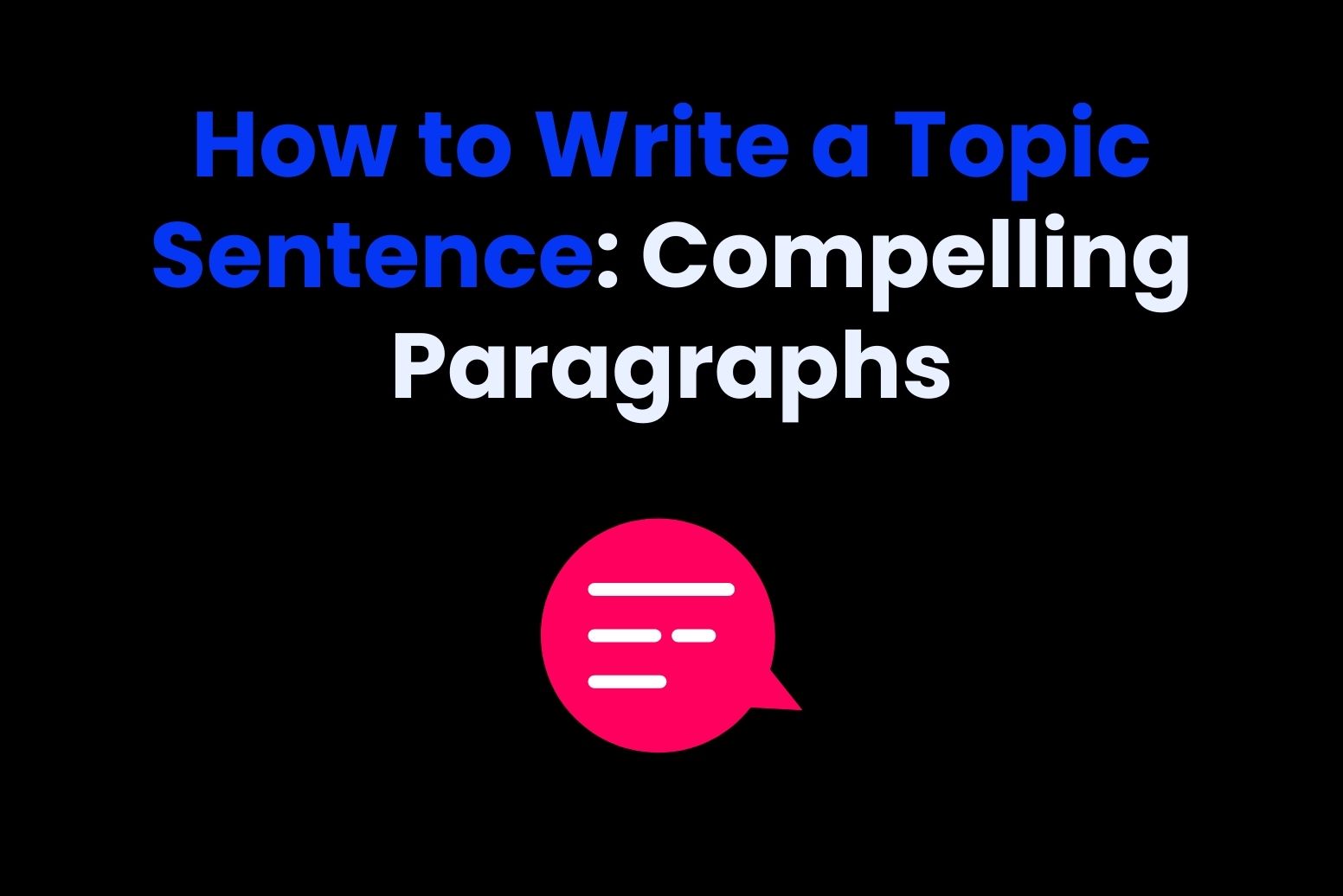Performance reviews are the lifeblood of employee development and an effective work environment. They provide a formal setting for managers and employees to share successes, problems, and potential for growth. The crux of the review is the performance review summary, essentially a document to pen down communication or even ‘write-up’ regarding feedback, success, and scope for improvement. Here is we have a article of performance review summary examples, actionable tips, and advanced tools, such as Arvin AI, to make the process of writing performance review summaries seamless and rich.
What is a Performance Review Summary?
A performance review summary is a short concise write-up that summarizes the performance of an employee for a given period. It encompasses information relating to his achievement, areas of improvement, and objectives to be attained in future. The various purposes it serves include documenting performance trends and supporting progression in career and accountability.
Key Elements of a Performance review summary examples
- Employee Information: Includes the employee’s name, role, and review period.
- Core Achievements: Highlights the employee’s accomplishments and contributions that align with team and organizational goals.
- Strengths and Skills: Recognizes key skills, strengths, and areas where the employee excels.
- Areas for Improvement: Provides constructive feedback on specific challenges and suggestions for overcoming them.
- Goals and Next Steps: Outlines clear, actionable goals for professional growth.
- Overall Rating or Assessment: Offers a qualitative or quantitative evaluation of performance.
Importance of Clear, Concise, and Constructive Feedback
Clear and constructive feedback fosters trust, high morale, and elicits employees’ impact within the organization. A quick summary ensures that the message gets communicated easily, and constructional language puts the recipient in a better light to grow without losing morale.
- Benefits for Employees: Encourages engagement, identifies development opportunities, and builds confidence.
- Benefits for Organizations: Drives performance alignment with strategic goals and fosters a culture of continuous improvement.
Common Challenges in Writing Performance Review Summaries
- Bias or Subjectivity: Giving too much credence to recent occurrences or your own feelings rather than fact.
- Lack of Specificity: Giving general opinions that do not pin down concrete, measureable results or what areas are in need of improvement.
- Overloading with Details: Gifting too much information that the review loses focus.
- Tone Missteps: Using overly harsh or overly vague language, which can prevent effective discussion.
Types of Performance Review Summaries
Positive Performance Review Summary Examples
Performance review summary examples build on the celebration of achievements and reinforcement of strengths to inspire employees. They emphasize contributions and professional growth.
Key Focus Areas:
- Acknowledge achievements: Directly indicate areas where specific projects, milestones, or metrics were well delivered.
- Emphasize strengths: Indicate specific skills or qualities that have made a significant impact.
- Showcase growth: Discuss in what areas the employee has shown improvement or development.
Performance review summary examples Templates:
- “John: Consistently shows excellence in maintaining clients and has increased customer satisfaction ratings by 20% last quarter. Problem-solving skills and proactive attitudes have really made the team shine.
- “Emily: Her organizational skills speak for themselves – having led complex projects on tight deadlines. Her dedication has seen the department achieve its main objectives this year.”
Constructive Performance Review Summary Examples
Constructive reviews discuss areas for development in an assertive, positive way and lead employees toward developing and rising above challenges.
Key Focus Areas:
- Identify specific areas of improvement: Must be concrete, measurable.
- Practical recommendations: Include what to do, which resources would be beneficial, etc.
- Focus on the positive: Relate criticisms with positivity.
Example Templates:
- “Mark has demonstrated much promise in his position, but more finely tuned time management skills will assist him in juggling multiple priorities. A priority handling training course would be a worthwhile investment.”
- “As creative as Sarah is, meeting deadlines for her tasks will make her contribution to group projects very productive. She could achieve increased productivity if she sets goals for each day.
Self-Performance Review Summary Examples
Self-assessment tools ensure employees reflect on their own performance, increasing self-awareness and accountability. In this way, it gives them an understanding of how they view what they have contributed and where improvements can be made.
Key Focus Areas:
- Reflect on accomplishments: Employees should identify major accomplishments and their impact.
- Acknowledge Challenges: Discuss areas that need improvement, with suggestions for improvement.
- Set Goals: Provide future aspiration and plans for development.
Performance review summary examples Templates:
- “I headed three major projects over the last twelve months and completed each of them within the budget. Although I have learned much technically, I need to further my training in leadership through workshops.”
- “I am proud that my clients’ relations are always great, hence, leading to an increase of 15% of the repeat business. I, however am in need to improve my public speaking skills since I sometimes have failure in delivering more convincing arguments while giving presentations.”
Tips for Writing Effective Performance Review Summaries
This process of providing clear, actionably meaningful feedback to the employees makes performance review summaries critical. An effective review will steer future development, note accomplishments, and identify areas for improvement. Here are some tips to help you craft effective performance review summaries:
Use Specific Language
Measurable language, with clear and concise writing, should be used for performance review summary examples to allow individuals to receive feedback that is clear and actionably understandable. Specific language helps employees know what they did correctly or where they have to improve.
- Importance of Measurable and Clear Language: Precise language allows feedback to be understood more clearly and to less ambiguity. When you give explicit illustrations of actual behaviors, actions, and results, it helps the employee visualize exactly where they stand in terms of how they are doing. This also gives them definite things to work on, thereby making feedback more useful.
Examples of Vague vs. Specific Feedback:
- Vague Feedback: “You have to up your communication skills.”
- Specific Feedback: “In team meetings, it would be helpful if you provided more updates on your progress to keep the group informed. For example, during the last meeting, you didn’t mention the status of the XYZ project, which caused some confusion.”
By giving specifics, the employee understands exactly what to improve and how to do so.
Balance Positive and Negative Feedback
One of the greatest ways to design a performance review is through the balance of positive and negative feedback. This will prevent criticism from demotivating an employee and at the same time help him recognize his strengths.
The Feedback Sandwich Approach
“Feedback sandwiching” is an approach in which two pieces of positive feedback are sandwiched between one negative critique. With this approach, morale is maintained, but improvements need to be addressed. For instance:
- Positive Feedback: “You always meet your deadlines, and your work is mostly of quality.
- Constructive Feedback: “However, you sometimes miss some minor points in your reports, causing confusion.”
Be Goal-Oriented
A good performance review summary examples does not only look at the previous performance but also connects previous reviews to future objectives and development plans. Employees ought to walk out of the review knowing how to continue to improve and move forward in their respective roles.
- Linking reviews to the future: This involves showing employees what they need to achieve in the future. A clear goal that can be attained is essential in supporting development and maintaining the drive of employees. It also ensures a review is future-oriented and not in the past.
- Example: “In the next quarter, it would be excellent if you could enhance your skills in our project management software. I encourage you to finish your online training, and to use the tool for all tasks related to projects. This will help to optimize our processes and increase synergies among team members.”
This goal ties the feedback directly to an action that the employee can take, making it the very obvious route for their development path.
Maintain a Constructive Tone
The tone of the performance review should be supportive and constructive. It is possible to give the negative feedback without blame or criticism in a way that discourages the employee even further. Instead, encourage improvement and growth.
- Avoiding Blame: Do not point fingers or assign blame. Instead, discuss actions and outcomes. Present problems as areas for improvement rather than labeling the employee “poor” or “inadequate.”
- Example: “You did not measure up to expectations on the project.” You could say, “There were some challenges with the project deadlines. Let’s work together to identify ways to ensure that this does not happen in the future.”
This methodology encourages growth mindset and tells the employee that there isn’t an intent to punish.
Challenges in Writing Performance Review Summaries
Writing performance review summary examples is a very important task for managers and supervisors because giving feedback to employees proves helpful in motivating and challenging them to grow and develop further. However, there are many pitfalls that make these reviews useless. Let’s discuss some of the common pitfalls and the help of technology in alleviating the challenges.
Common Pitfalls in Writing Performance Review Summaries
Biased Language
One of the difficulties of writing a summary for a performance review is biased language. The managers, inadvertently at times, may use words that have personal opinions and biases in them, making it unfair towards the employee according to gender, age, race, or personal preferences. Such biased reviews are capable of destroying the credibility of the review and demoralizing an employee.
- Example of bias: An example of this is when a behavior is labeled as “too aggressive” from someone who is actually assertive. This results in personal bias instead of determining fact.
Lack of Preparation
Inadequate preparation is another common pitfall in writing performance review summary examples. When managers do not collect enough data or contemplate an employee’s contributions over an entire review period, they may be left providing vague feedback. Such a scenario may lead to generalized comments that do not authentically capture the qualities of an individual worker or his weaknesses.
- Example of lack of preparation: Writing a review based solely on recent events, such as a single project, without considering long-term performance.
Generic Feedback
A summation of the performance review that provides sweeping statements such as “good work” or “needs improvement” does not give action steps that employees need. Employees are uncertain about how to improve or what to expect in the future without concrete examples of what was done well or what needs changing.
- Example of non-specific feedback: “You did a great job this year.” Such feedback is not useful for growth or development without specifics.
How Technology Can Help Overcome These Challenges?
Technology helps managers overcome these common pitfalls in performance reviews. With the right tools and platforms, it can be done in a more objective, exhaustive, and personalized manner.
Bias Detection Tools
Most high-tech performance review software incorporates bias detection algorithms that analyze written feedback. Such tools identify biased language over gender, race, or age, among other causes, and suggest alternative neutral phrases. This way, feedback is created in an disproportionate, balanced, and objective form. This is very important to achieve the ultimate goal: a positive and inclusive work environment.
- Example: AI-powered tools can highlight when a manager is using biased or subjective terms such as “too emotional” and “don’t fit in,” and instead offer neutral alternatives such as “needs improvement in stress handling” or “requires better team integration.”
Data Collection and Analytics
Technology provides managers with easy ways to acquire data regarding an employee’s performance over time. Performance review platforms can track important metrics such as goal completion, project milestones, and peer feedback. This ensures that the review is based on a thorough understanding of their performance thereby reducing the risk of biased or superficial evaluations.
- Example: Employee performance management systems can gather all feedbacks from different sources as 360-degree reviews, a project-specific performance data, and self-assessments, enabling a more comprehensive review.
Automated Feedback Suggestions
Performance management tools can offer automated feedback suggestions based on the data collected. These tools use predefined templates or AI to recommend personalized feedback, ensuring it is specific, actionable, and aligned with the employee’s objectives. This can help eliminate generic or vague comments and encourage more constructive discussions.
- Example: When an employee consistently met their deadlines but failed to perform well on teamwork, the system may recommend such feedback as “You have excelled in meeting deadlines, but there is room for improvement regarding collaboration with others. Try proactive communication in team projects.”
Consistency Across Reviews
Technology can make performance review summary examples consistent by allowing managers to use frameworks, templates, and best practices. It diminishes the potential inconsistencies in feedback, especially since multiple managers may be reviewing similar employees within the organization. It also makes sure that everyone gets reviewed to the same standards, thus enhancing fairness and openness.
- Example: A performance review platform may require managers to rate employees on the same set of competencies, such as communication, leadership, and problem-solving, ensuring uniformity in evaluation.
Continuous Feedback Mechanisms
Many performance management systems also allow for constant feedback rather than waiting for an annual review. This will enable employees to get prompt, relevant, and specific feedback during the year, which therefore helps reduce the pressure of managers giving a comprehensive review without having adequate data, thus rescuing them from the risk of relying on memory or recent events only to write reviews.
- Example: A manager can feed short, time-sensitive comments following significant milestones, such as when a key project is accomplished or a target is reached, so the performance review cycle captures a living, ongoing conversation instead of a once-a-year ordeal.
Introducing Arvin AI: Your Performance Review Writing Assistant
Arvin AI is an innovative platform that comes to assist the writing of insightful and effective performance reviews for both HR professionals and managers. By utilizing advanced artificial intelligence, Arvin AI streamlines the production of well-structured, constructive feedback in order to foster growth and satisfaction from employees. The tool caters to a wide range of HR applications- particularly through customized performance review summary examples that can source insights from AI systems and help to fully streamline the review process. With an easy-to-use interface, Arvin AI is best suited for companies looking to save time and quality in their employee assessments.
Key Features of Arvin AI
- AI-driven suggestions for positive and constructive feedback: Displays personalized feedback that contains both strengths and areas that need improvement
- Templates for different types of reviews: Offers a number of pre-designed templates for annual, quarterly, and 360-degree feedback reviews
- User-friendly interface for quick edits: Easy to use and navigate while enabling fast customization and review drafts of the full reviews.
- Integration with existing HR tools: Proper integration with various HR software and performance management systems directly follows to streamline data flow.
- Customizable feedback generation: The style and tone of feedback may be set by users in accordance with the organizational culture.
Steps to write Performance Review Summary
Step 1: Visit the Arvin AI website click on the products and open the AI chat or article writer

Step 2: In this you have to give the prompt to Arvin for writing Performance summary with your given data as a HR or expert.

Step 3: Change or modify the data according to your needs and you can also use your new prompt to modify it
Step 4: Now you can copy or download the performance Summary and use it.

Benefits of Using Arvin AI for Performance Reviews
Time-saving for HR professionals and managers
Arvin AI saves time on writing performance reviews because with Arvin AI, the process is streamlined. It quickly prepares a comprehensive review that would usually have been done by HR professionals and managers from scratch, saving time that can be used by them on other strategic tasks.
Ensures consistency across reviews
With Arvin AI, performance review summary examples become consistent so that all employees receive fair and balanced feedback. The AI-driven suggestions will come in a standard format to ensure that each review has the same quality and structure regardless of the manager or reviewer.
Enhances the quality of feedback with AI-backed insights
Arvin AI improves the quality of feedback by providing data-driven insight and recommendation that may not be self-evident. Integrating AI into the review-writing process, managers may now provide more meaningful, actionable feedback that will better support employees’ development.
Encourages continuous improvement in performance review processes
Arvin AI is not just for helping out with writing reviews but rather, it is designed to continually improve the process of performance reviews themselves. With tool adaptability and the integration with HR systems, organizations are able to refine their performance management practices over time to be both effective and impactful for the process.
Additional Resources for Improving Performance Reviews
Sometimes, making performance reviews more effective involves continued learning, the right tools, and staying on top of best practices. Here are some resources to help enhance the performance review summary examples:
Books, Courses, and Guides
1. Books
- “Radical Candor” by Kim Scott: This book offers guidance on giving feedback that is both kind and clear, making it easier to deliver performance reviews that promote growth.
- “The Performance Appraisal Tool Kit” by Paul Falcone: A guide containing templates and strategies for designing and conducting productive performance appraisals.
2. Courses:
- LinkedIn Learning: Provides courses in managing performance, conducting effective reviews, and giving constructive feedback
- Courses: Performs courses such as “Performance Management and Improvement,” which will help you to polish your review process and approach
3. Guides:
- HR blogs and websites have free downloadable guides on performance review strategies. Websites, like SHRM or HBR, offer quite useful insights.
How-to Videos and Blogs:
- YouTube: There are plenty of tutorials on the structuring of a performance review, actionable feedback, and measuring success. Channels that specialize in HR practices or management skills usually have dedicated videos.
- Blogs: Many HR practitioners and business consultants have blogs, where they write tips on how to administer performance reviews. Popular sites are Workforce.com, The Muse, and HR Morning.
- Example: “How to Write Performance Reviews that Inspire.” By Gallup gives the reader practical steps in taking performance reviews from a box-ticking exercise into an inspiring conversation.
Conclusion
Performance reviews should be effective in helping assess employee development and the success of the organization. They help guide employees; understand to what extent one has succeeded, and know which areas of improvement can be pointed at. However, such timely and excellent reviews result from protracted and laborious processes. Arvin AI simplifies the process by offering advanced features that can automate data analysis and provide feedback, thereby making performance review summary examples more efficient and impactful. Be it to streamline your review or enhance the quality of your feedback, Arvin AI is a game-changer.
FAQs on Improving Performance Reviews
1. Why are performance reviews important for employee development?
Performance reviews give employees both praise and criticism. It helps develop individual goals in line with organizational objectives, encourages employees to get engaged, and supports career development. Constructive feedback on the performance review builds a culture of continuous learning and serves as a motivation to work at one’s best.
2. What do you think can make performance reviews more effective?
To make performance reviews more effective, focus on specific, measurable outcomes and provide actionable feedback. Use clear, honest communication without vague generalities, and make the review a two-way conversation. Incorporating regular check-ins and setting clear expectations also keeps the process of reviewing meaningful.
3. What role does technology play in performance reviews?
With performance management software and AI tools like Arvin AI, technology can automate data analysis and track employee progress and also design tailored feedback. It streamlines reviews, reduces biases, and makes performance reviews more objective while saving the time of managers while being consistent and fair.
4. Can performance reviews help in employee retention?
Yes, performance reviews strongly contribute to employee retention. Employees value constructive feedback and recognition at their efforts, so they are more likely to continue working for the same employer when treated respectfully. Overall, regular, transparent reviews with the employees increase trust and open communication, thereby reducing turnover and enhancing employee satisfaction.






